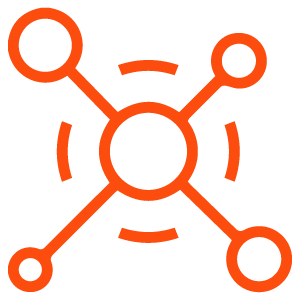#UserCentric #Design #Custom #Websites #Built #Audiences
In today’s digital landscape, the importance of user-centric design in web development cannot be overstated. Websites serve as the digital face of brands, and to make a lasting impression, they need to resonate with their target audience. Custom websites that prioritize user experience (UX) are essential for meeting audience expectations and ensuring satisfaction. This article will delve into what user-centric design entails, its benefits, best practices, and how to create custom websites tailored for the needs of your audience.
Understanding User-Centric Design
What is User-Centric Design?
User-centric design is a design methodology that prioritizes the end user throughout the development process. This approach involves understanding the needs, preferences, and behaviors of the target audience to create a website that is not only visually appealing but also functional and intuitive.
Principles of User-Centric Design
- Empathy: Understanding users’ emotions, motivations, and pain points.
- Usability: Ensuring that the website is easy to navigate and use.
- Accessibility: Making the website usable for people with varying abilities and disabilities.
- Feedback: Implementing mechanisms for users to provide feedback, which can inform future updates.
- Iteration: Continuously refining the website based on user testing and feedback.
The Need for Custom Websites
Why Choose Custom Over Template Designs?
While templates can be attractive due to their cost-effectiveness and speed of deployment, they often lack the uniqueness and adaptability that a custom website offers. Custom websites:
- Align with Brand Identity: A custom website can encapsulate the brand’s ethos and personality, setting it apart from competitors.
- Specificity: They can be tailored to meet specific user needs that templates may not address.
- Scalability: Custom websites can be built to grow and evolve with the business, accommodating new functionalities and content easily.
Benefits of User-Centric Design
- Enhanced User Experience: Focusing on the needs of users leads to intuitive navigation, effective layout, and useful features that enhance overall satisfaction.
- Increased Engagement: A well-designed website keeps visitors engaged, reducing bounce rates and increasing time on site.
- Higher Conversion Rates: Tailoring the design to facilitate user actions—whether signing up, purchasing, or contacting—results in more conversions.
- Positive Brand Perception: A website that reflects understanding and respect for its users fosters trust and loyalty.
Steps to Create a User-Centric Custom Website
1. Research Your Audience
Understanding your target audience is the foundation of user-centric design. Utilize surveys, interviews, and analytics to gather data about your audience. Key metrics to consider include:
- Demographics: Age, gender, location
- Needs and Preferences: What do they seek from your website?
- Behavior Patterns: How do they navigate similar websites?
2. Define User Personas
User personas are fictional characters representing segments of your target audience based on your research. Each persona should include:
- Background information
- Goals
- Pain points
- Behaviors
These personas will guide design and content decisions throughout the development process.
3. Map User Journeys
Mapping out user journeys helps visualize how different personas interact with your website. Identifying key touchpoints—where users engage with the site—helps ensure that your design accommodates their needs at every stage of their journey, from awareness to conversion.
4. Design Wireframes and Prototypes
Creating wireframes helps outline the website’s structure without getting bogged down in details. Prototypes can then be built to bring the wireframes to life, demonstrating how users will interact with the site. User testing at this stage can provide invaluable feedback for refinements.
5. Develop the Website
With a clear understanding of user needs, design specifications, and user feedback, development can proceed. Use responsive design principles to ensure the website functions seamlessly across devices, from desktops to smartphones.
6. Conduct User Testing
Before launching, conduct user testing sessions to see how real users interact with your website. This process helps identify any usability issues and allows for final adjustments to be made based on actual user input.
7. Launch and Monitor
Once the site is launched, use analytics tools to monitor user interactions. Pay close attention to metrics such as traffic patterns, bounce rates, and conversion rates. Continuous monitoring and iterative design will keep the site aligned with user needs.
8. Soliciting and Implementing Feedback
After the launch, keep a line of communication open with users. Encourage feedback through surveys, contact forms, or feedback buttons. Use this information for future updates and to inform ongoing design strategies.
Common Challenges in User-Centric Design
Balancing User Needs with Business Goals
One of the biggest challenges in user-centric design is finding a balance between what users want and what the business needs. Marketing teams often push for features that may not enhance user experience. Regular communication and collaboration between design, marketing, and development teams can help bridge this gap.
Staying Updated with Trends and Technologies
The digital landscape is ever-evolving, with new technologies and design trends emerging frequently. Designers must stay informed to ensure that their designs remain relevant, and users receive a cutting-edge experience. Regular training and professional development opportunities for the design team can facilitate this.
Managing Resources and Time Constraints
Building a custom website for user-centric design often requires significant resources and time. Stakeholders may be hesitant to invest in such projects due to budget or timeline concerns. Clear communication of the long-term benefits of user-centric design can help alleviate these concerns.
Best Practices for User-Centric Design
1. Keep Interfaces Simple
Simplicity is key in user interface (UI) design. A cluttered interface can overwhelm users. Aim for a clean layout with clear navigation and straightforward content.
2. Use Familiar Patterns
Leverage established design conventions and patterns that users are familiar with. This makes it easier for users to navigate your site without confusion.
3. Optimize Load Times
A slow website can frustrate users and lead to high bounce rates. Optimize images, minimize scripts, and consider a content delivery network (CDN) to enhance load speed.
4. Prioritize Mobile Responsiveness
With a significant portion of users accessing websites via smartphones, responsive design is crucial. Ensure that websites are equally functional and appealing across all devices.
5. Implement Clear Calls to Action (CTAs)
Effective CTAs guide users toward desired actions, whether it’s completing a purchase, signing up for a newsletter, or contacting the business. Use contrasting colors and strategic placement to make CTAs stand out.
6. Use A/B Testing
A/B testing allows designers to compare two versions of a webpage to determine which performs better in terms of user engagement or conversion. This data-driven approach enables ongoing improvements based on user interaction.
7. Regularly Update Content
To keep users engaged, regularly update website content with fresh information, blog posts, or interactive features. This not only aids in SEO but also keeps users returning to your site.
The Future of User-Centric Design
As technology evolves, user-centric design will become even more important. Emerging trends such as artificial intelligence (AI), augmented reality (AR), and voice user interfaces (VUIs) are setting new standards for user experience. Businesses that adopt a user-centric approach will be better equipped to navigate these trends and meet the changing demands of their audiences.
Additionally, as societal emphasis on inclusivity grows, more websites will need to prioritize accessibility. This will involve creating designs that accommodate users with disabilities, ensuring that everyone can access and enjoy online content.
Conclusion
User-centric design is not just a trend; it is a fundamental approach to creating meaningful and effective websites. By focusing on the needs and expectations of the audience, businesses can create custom websites that not only capture attention but also foster loyalty and engagement. In a competitive digital landscape, investing in user-centric design is a crucial step towards achieving long-term success.
FAQs
1. What is user-centric design?
User-centric design is a design methodology that prioritizes the end user throughout the development process, ensuring that websites meet the needs, preferences, and behaviors of the target audience.
2. Why should I choose a custom website over a template?
Custom websites can be tailored to fit your unique brand identity and specific user needs, while templates may not offer the flexibility or functionality needed.
3. How do I start the user research process?
You can start user research through surveys, interviews, and data analytics to gather information about your target audience’s demographics, needs, and behaviors.
4. What are user personas?
User personas are fictional characters that represent segments of your target audience and help guide design decisions based on their goals, pain points, and behaviors.
5. How can I ensure that my website is accessible?
Incorporating features like alt text for images, keyboard navigability, and contrast checks can help enhance website accessibility for users with disabilities.
6. How often should I update my website’s content?
Regular updates are recommended to keep the content fresh, but a reasonable cadence is typically every few weeks to months, depending on your industry.
7. What tools can I use for user testing?
There are various tools available for user testing, such as UserTesting, Hotjar, and Google Analytics, which can provide insights about how users interact with your site.
By focusing on user-centric design, businesses can create effective websites that address their audiences’ needs while also meeting organizational goals.
Sure! However, I need to know the title or topic of the article you’d like me to write about. Could you please provide that?








